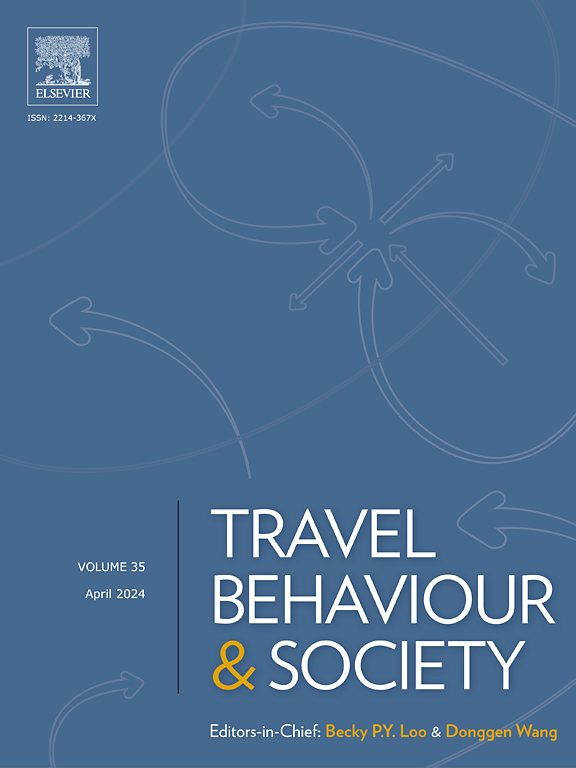Active travel and socioeconomic segregation in Temuco, Chile: The association of personal factors and perceived built environment
IF 5.1
2区 工程技术
Q1 TRANSPORTATION
引用次数: 0
Abstract
Improvement of active travel would contribute to enhancing the minimum rate of physical activity; thus improving public health. Although the importance of social and built environmental variables in promoting active travel has been highlighted, there have been few studies on how both domains simultaneously affect active travel. The impact of socioeconomic status (SES) on the relationships between active travel and its contributing features was also highlighted in the relevant studies. In this sense, compared to low SES neighborhoods (NLSES), the high SES neighborhoods (NHSES) have a far superior infrastructure for active transport. This study aims to examine the associations between active travel and the factors that influence it using data from two different neighborhood types, namely NLSES and NHSES in Temuco, a medium-sized southern city in Chile. The objectives were examined using a questionnaire, two types of regression analysis, and an open-ended question. The results of the qualitative approach showed that personal insecurity is the most significant barrier to walking in NLSES. In addition, the results of the quantitative approach demonstrated the associations of several socio-demographic, personal, social, and built environmental factors with active travel in both NLSES and NHSES, including monthly income, access to a bicycle, attitude toward walking, specific lifestyles, role models, social cohesion, encouragement, perceived accessibility, and perceived access to bus stations. These findings could be used by urban and transport policymakers of this city to enhance active travel based on each neighbourhood type in this city.
智利特穆科的积极旅行和社会经济隔离:个人因素和感知建筑环境的关联
积极出行的改善将有助于提高最低体力活动率;从而改善公众健康。虽然社会和建筑环境变量在促进主动旅行中的重要性已经得到强调,但关于这两个领域如何同时影响主动旅行的研究很少。社会经济地位(SES)对主动出行及其贡献特征之间关系的影响也在相关研究中得到了强调。从这个意义上说,与低SES社区(NLSES)相比,高SES社区(NHSES)拥有更优越的主动交通基础设施。本研究旨在利用智利南部中等城市特木科的两种不同社区类型(即NLSES和NHSES)的数据,研究积极出行与影响因素之间的关系。使用问卷、两种类型的回归分析和一个开放式问题来检查目标。定性分析的结果表明,个人不安全感是NLSES中最显著的行走障碍。此外,定量方法的结果表明,在NLSES和NHSES中,几个社会人口、个人、社会和环境因素与积极出行有关,包括月收入、获得自行车、对步行的态度、特定的生活方式、角色榜样、社会凝聚力、鼓励、感知可达性和感知到公交车站的可达性。这些发现可以被该城市的城市和交通政策制定者用来根据该城市的每个社区类型来增强主动出行。
本文章由计算机程序翻译,如有差异,请以英文原文为准。
求助全文
约1分钟内获得全文
求助全文
来源期刊

Travel Behaviour and Society
TRANSPORTATION-
CiteScore
9.80
自引率
7.70%
发文量
109
期刊介绍:
Travel Behaviour and Society is an interdisciplinary journal publishing high-quality original papers which report leading edge research in theories, methodologies and applications concerning transportation issues and challenges which involve the social and spatial dimensions. In particular, it provides a discussion forum for major research in travel behaviour, transportation infrastructure, transportation and environmental issues, mobility and social sustainability, transportation geographic information systems (TGIS), transportation and quality of life, transportation data collection and analysis, etc.
 求助内容:
求助内容: 应助结果提醒方式:
应助结果提醒方式:


